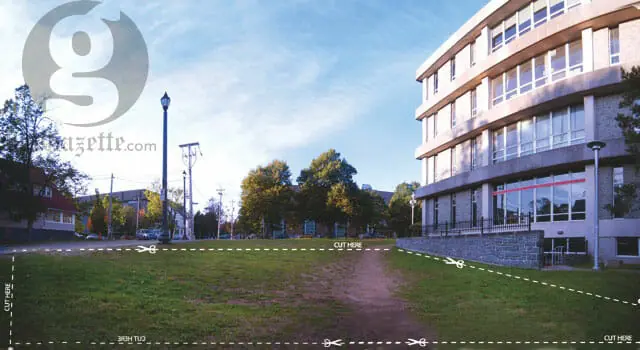Dalhousie has room to make campus greener
Why is it that anytime someone mentions a new “green” project for Dalhousie, I instantly cringe and brace myself for another slick, sky-scraping glass building or a sterile, post-modern “social club”?
I’m sure the Mona Campbell Building is much more eco-friendly and sustainable than the archaic, medieval castle that stood before it, and some will say I’m just bitter about the new Grad House, but why is it that I feel like we’ve entirely missed the point of a greener campus?
When was it that we chose to auction off the rights to the word “green,” hauling in ad-execs to gussy it up to slyly refer to a desolate and trampled dirt slope beside the Student Union Building, which serves as a slightly more convenient route to the bus-stop, as a “green space”? Last time I checked, guys, a brown walkway to the side of a building didn’t constitute a “green space.” For one, the majority of it isn’t even green.
Of course – I keep being reminded – I am overlooking that beautifully landscaped, arboreal, 5 x 5 space behind the SUB with the gorgeous picnic table, and there’s always that nice big chunk of green grass between the academic buildings we call the Quad. But for a university of over 16,000 people, don’t you think we could do a little better than a couple of grass patches and a table?
Aside from being one of the most lush and natural cities in Canada, the Halifax region harbours a plethora of local food producers and farmers. Yet Dalhousie consistently eschews the installation of locally sourced food proprietors on campus, opting to take big chains and multinationals under its wings. Renovating the Killam Library atrium to accommodate a Subway franchise is just the latest in the long line of Dalhousie essentially flipping off the community.
There seems to be this pervasive and viral attitude on campus where we believe we’re doing enough to foster an environmentally friendly, greener Dalhousie (“Why bother with green spaces on campus? Halifax is plenty green!”). There is no shortage of students with the willingness and desire to do more. However, instead of initiatives for introducing and expanding community gardens and food co-ops on campus, we get the administrations push for more parking spaces as they turn a blind eye towards the rest.
Now, I know we’re a relatively big campus, but contextually, Halifax is a small city. Is the idea of biking or walking to school now so absurd that we feel the need to expand an already bulging and superfluous expanse of asphalt? Sprawling squares of pavement and buildings now encompass so much of Dalhousie that when you actually encounter an open space, you have to look up from your iPhone and make sure you’re still on campus.
Dalhousie’s Band-Aid fixes for an increasingly more pressing issue are starting to wear thin. Being a greener campus doesn’t just mean taking a reactive stance by introducing smart lighting and cisterns. It means developing pro-active, long-term solutions and making a concerted effort to maintain some of the integrity and natural lustre of the campus.
While organizations such as NSPRIG have made great strides with projects like the Seemore Green community garden on Seymour Street, there is still a woefully underwhelming lack of initiative for a campus located in such an environmentally conscious and collaborative-minded city.
It’s pretty sad when the closest thing Dalhousie has to a “green space” is that stretch at the end of South Street and Oxford Street overlooking the train tracks where everyone gets high.



Recent Comments